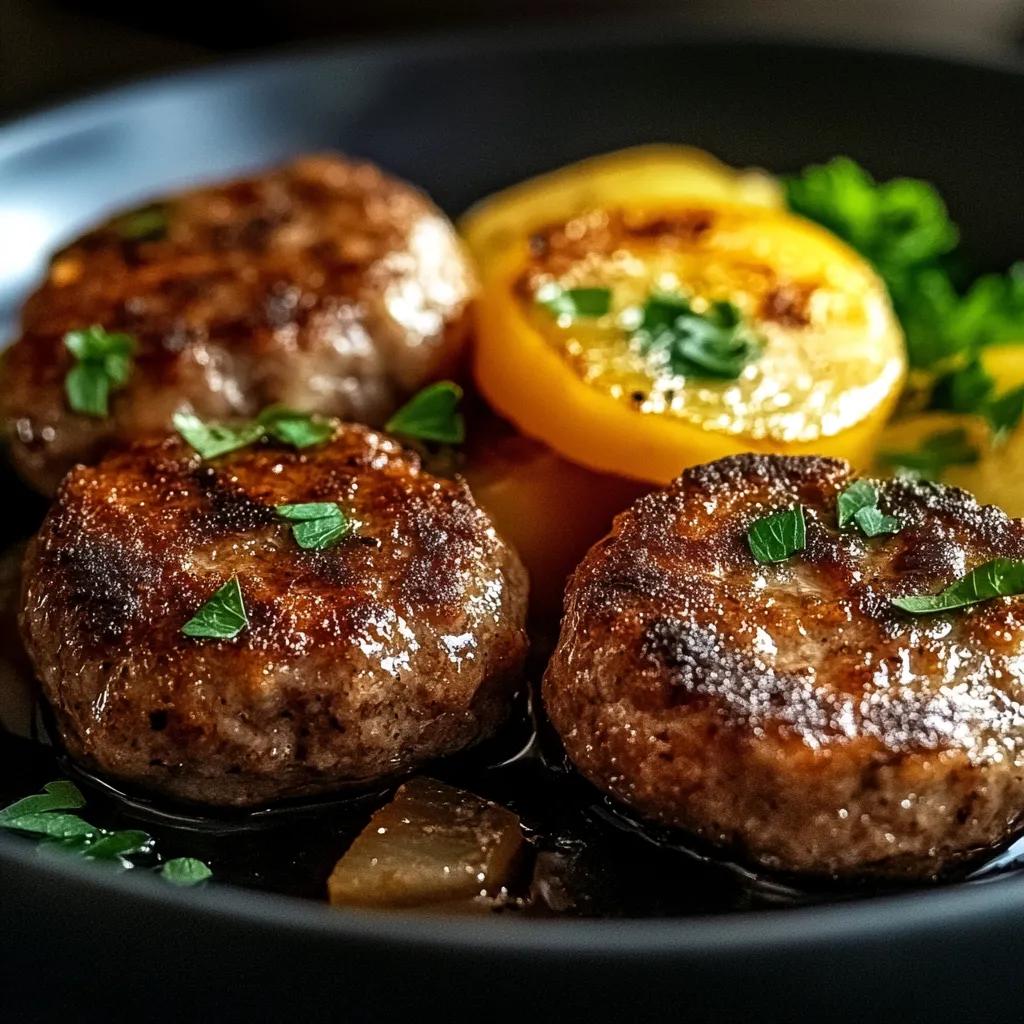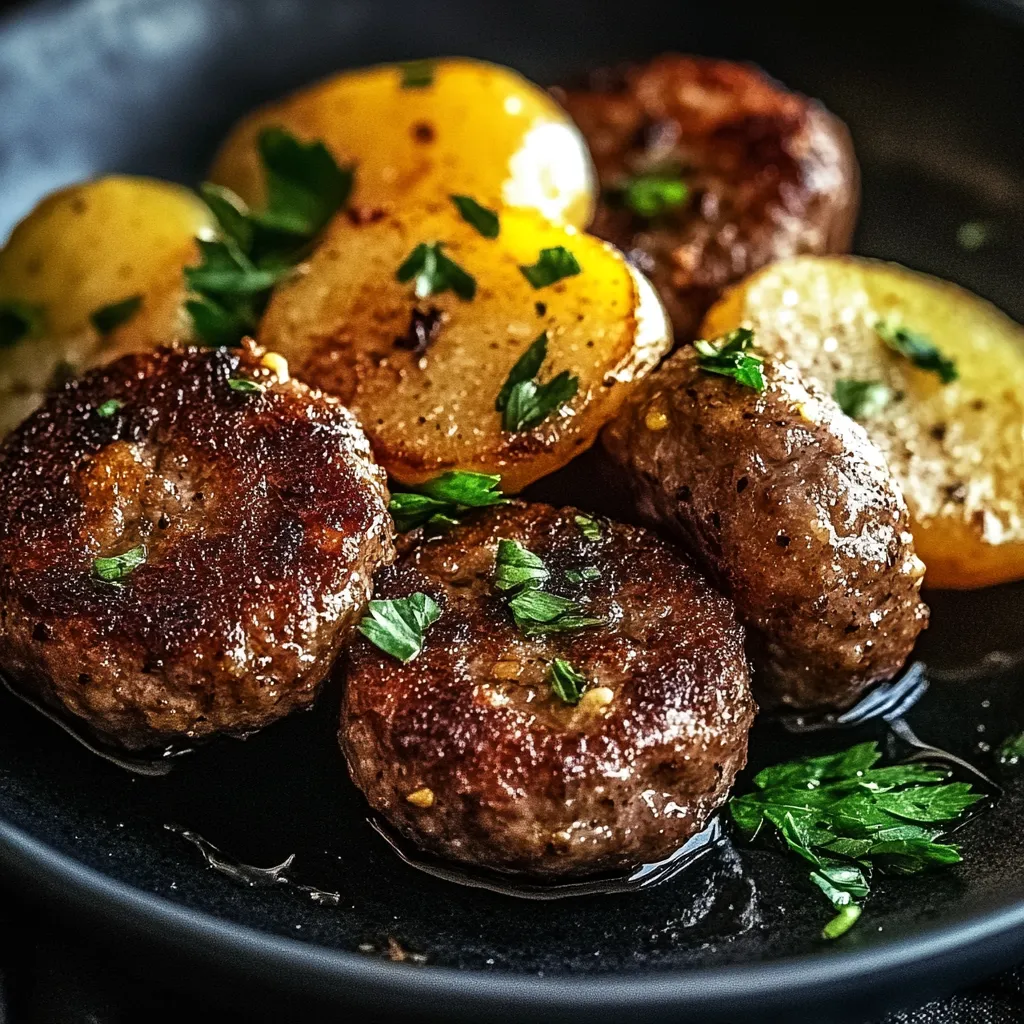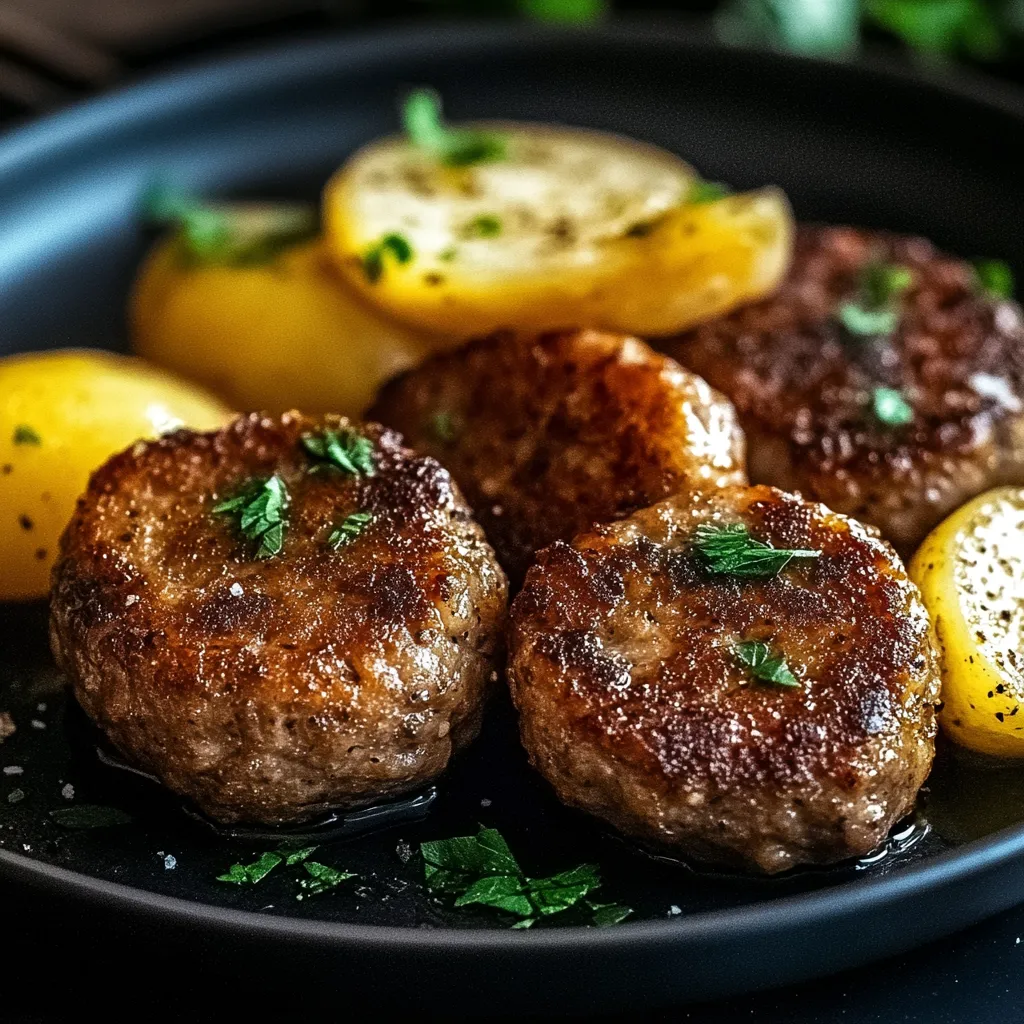 Pin it
Pin it
These savory German meatballs have been a cornerstone of my family's meals for generations. The perfect blend of pork and beef creates juicy patties with a crisp exterior that transports you straight to a traditional German kitchen. Frikadellen might look simple, but they pack tremendous flavor that makes them irresistible for weeknight dinners or special gatherings.
I first learned to make Frikadellen from my German grandmother who insisted I master the technique of properly mixing the meat with my hands. She would always say the warmth of your hands brings the ingredients together in a way no spoon ever could.
Ingredients
- Ground pork: Brings richness and fat content that keeps the patties moist
- Ground beef: Adds robust flavor and creates the perfect texture balance
- Stale bread soaked in milk: Serves as a traditional binding agent that keeps patties tender
- Onion: Provides aromatic sweetness that enhances the savory notes
- Egg: Works as the crucial binding ingredient that holds everything together
- Mustard: Adds tanginess that cuts through the richness of the meat
- Fresh parsley: Introduces brightness and color to the mixture
- Salt and pepper: Essential for properly seasoning these hearty patties
- Butter or oil for frying: Creates that irresistible golden crust
Step-by-Step Instructions
- Soak the Bread:
- Place your stale bread slices in a bowl and pour milk over them. Allow them to soak for exactly 5 minutes until they become completely soft and pliable. Then squeeze out every drop of excess liquid using your hands and crumble the moistened bread into small pieces in your mixing bowl. This creates the perfect binding agent for juicy patties.
- Create the Mixture:
- Add both ground meats to the soaked bread along with the finely chopped onion, egg, mustard, parsley, salt and pepper. Use your hands to thoroughly combine everything, working the mixture for about 3 minutes until it becomes cohesive and slightly sticky. The warmth of your hands activates the proteins in the meat for better binding.
- Shape the Patties:
- Divide the mixture into equal portions and shape each into oval patties approximately three quarters of an inch thick. Wet your hands slightly with cold water before shaping each patty to prevent sticking. Press a small indentation in the center of each patty with your thumb to prevent it from puffing up during cooking.
- Cook to Perfection:
- Heat your butter or oil in a large heavy skillet over medium heat until it shimmers but does not smoke. Place the patties in the pan with at least one inch between them to ensure proper browning. Cook each side for 6 minutes until deeply golden brown and the internal temperature reaches 160°F. Avoid pressing down on the patties while cooking as this releases precious juices.
- Rest and Serve:
- Transfer the cooked Frikadellen to a paper towel lined plate and allow them to rest for 3 minutes before serving. This crucial resting period allows the juices to redistribute throughout the meat for maximum flavor and moisture.
 Pin it
Pin it
My absolute favorite way to enjoy Frikadellen is the way my father taught me. He would slice a leftover cold patty, place it between two slices of crusty bread with a smear of mustard and some pickles. This simple sandwich accompanied many childhood picnics and remains my comfort food decades later.
Authentic German Traditions
In Germany, Frikadellen are much more than just meatballs. They represent family gatherings and beer garden traditions. You'll find them served at home, in restaurants, and especially at outdoor festivals throughout the country. Regional variations exist throughout Germany, with northern regions sometimes adding anchovy or herring, while southern versions might include more herbs or even a bit of garlic. The oval shape is traditional and distinguishes them from the rounder meatballs found in other cuisines.
Storage and Reheating
Frikadellen actually improve in flavor after a day in the refrigerator, making them perfect for meal prep. Store cooled patties in an airtight container for up to 3 days. To reheat, place them in a covered skillet with a tablespoon of water and warm over medium-low heat until heated through. This gentle steam-heat method preserves their moisture far better than microwave reheating. For freezing, place cooled patties on a parchment-lined baking sheet and freeze until solid before transferring to freezer bags where they'll keep for 3 months.
Perfect Pairings
While mashed potatoes and sauerkraut are traditional accompaniments, Frikadellen shine in many modern interpretations. Try serving them with a fresh cucumber salad dressed with dill and sour cream for a lighter option. They make excellent sandwich fillings when sliced thin and layered on crusty rolls with grainy mustard and pickled vegetables. For a complete German feast, pair them with braised red cabbage and potato dumplings, alongside a cold pilsner or wheat beer.
 Pin it
Pin it
These Frikadellen will transport you to the heart of Germany, bringing joy to your table every time you prepare them.
Frequently Asked Questions
- → Can I make Frikadellen ahead of time?
Yes, you can prepare Frikadellen in advance. You can either shape the raw patties and refrigerate them for up to 24 hours before cooking, or fully cook them and refrigerate for up to 3 days. Reheat cooked Frikadellen in a skillet with a little butter or in an oven at 350°F (175°C) until warmed through.
- → What's the difference between Frikadellen and regular hamburgers?
Frikadellen differ from hamburgers in several ways. They typically use a mixture of beef and pork (rather than just beef), contain soaked bread or breadcrumbs and eggs as binders, and include herbs and mustard for flavor. They're also usually served as a main dish with sides rather than on a bun.
- → Can I freeze uncooked Frikadellen mixture?
Yes, you can freeze both uncooked and cooked Frikadellen. For uncooked patties, shape them, place on a baking sheet with parchment paper, freeze until solid, then transfer to a freezer bag. When ready to cook, thaw in the refrigerator overnight before frying. Cooked Frikadellen can be frozen for up to 3 months.
- → What are traditional side dishes for Frikadellen?
Traditional German side dishes for Frikadellen include mashed potatoes, potato salad, sauerkraut, braised red cabbage, cucumber salad, or a simple green salad. They're also sometimes served with mustard or a light gravy on the side.
- → Can I bake Frikadellen instead of frying them?
Yes, you can bake Frikadellen instead of frying. Place the shaped patties on a parchment-lined baking sheet, brush with a little oil, and bake at 400°F (200°C) for about 20-25 minutes, flipping halfway through. While baking is healthier, pan-frying gives the traditional crispy exterior.
- → What kind of mustard works best in Frikadellen?
Traditional German medium-spiced mustard (Mittelscharf) or Dijon mustard works best for authentic flavor. However, you can adjust based on preference - use a milder mustard if you prefer less heat or a spicier German or whole grain mustard for more robust flavor.
